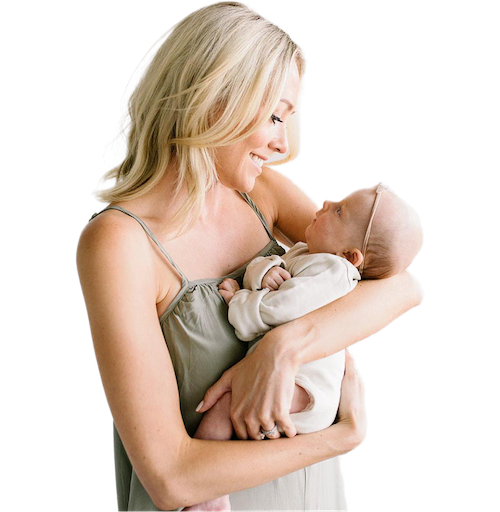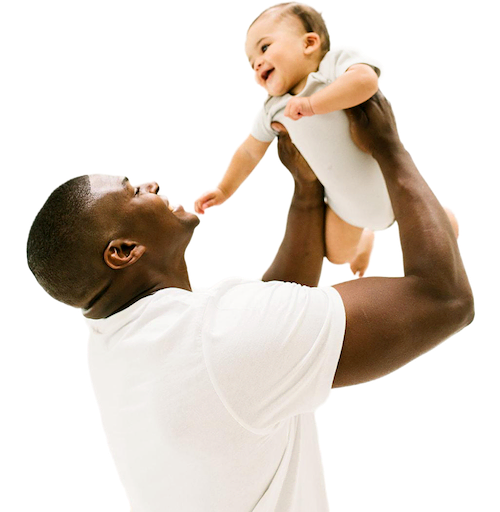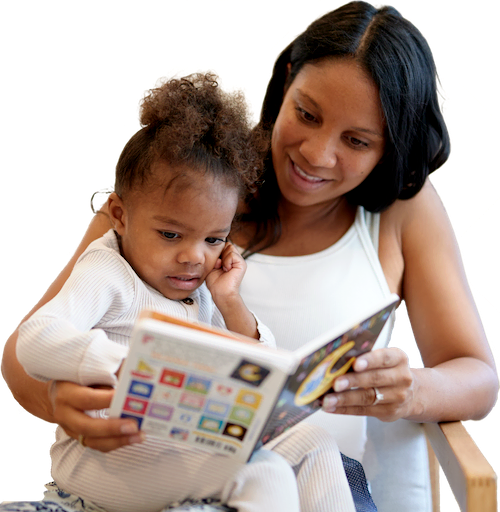Having a great little sleeper is wonderful, but at Taking Cara Babies, we also want you to have a safe sleeper. Please use this checklist for babies 0-12 months as a quick reference and reminder for safe sleep. Make sure the baby products you are using are safe too.
Please know: I’ve updated this checklist according to the most up-to-date safe sleep recommendation (2022) from the American Academy of Pediatrics (I LOVE Table 3!)(1)

Sleep surface is...anchor
Firm (No need for mattress cushions or pillow tops)
Flat (Even for reflux babies or babies with upper respiratory infections, an elevated position is not safe for sleep.)
Labeled as a crib, bassinet, portable crib, or play yard (No loungers, sleepers, nappers, or surfaces by any other name are approved.)
Clear of weighted products of any kind, any loose bedding, blankets, stuffed animals, or pillows
Free of any positional devices (No Boppy, DockATot, SnuggleMe, Organic, etc. Transitioning out of these devices is best for safe sleep.)
More than an arm’s length away from windows, furniture, and cords
His/her own space (Not bed-sharing with parents or siblings)
Crib has...anchor
No gaps around the edges of the mattress
No bumpers
Snuggly fitted sheets on the mattress
Slats no more than 2 ⅜ inch apart
No drop-down sides
Crib mattress at the appropriate height setting (When baby begins to sit independently, crib rail should be at mid-chest or higher on baby in the standing position.)
When using bassinets...anchor
Only use with the mattress sold specifically with it (applies to play yards too)
Transition when baby outgrows it (Weight/length limits OR when baby can sit, climb, or roll out)
Swaddling should be...anchor
Snug around the chest, but still allow for your hand to slide inside
Loose around the hips
Secure (Swaddles that velcro or zip can help to ensure that babies are secure.)
Discontinued when baby show signs of attempting to roll (usually occurs at 3-4 months)(1)
Only in non-weighted swaddles
Baby should also be...anchor
Placed on back for sleep for the entire first year
Allowed to sleep on his tummy IF he/she rolls there independently
Offered a pacifier at nap time and bedtime
Free of any bows, clips, hats, or mittens
Free of any blankets, weighted swaddles, or weighted sleep sacks of any kind
Dressed for temperature comfort
Considerations for sleep outside of the crib:anchor
If baby is being held or snuggled for sleep, caregiver must remain awake.
If baby falls asleep in a car seat, swing, carrier, or stroller, baby is moved to flat, firm sleep surface as soon as safe and practical (as specifically recommended by the AAP(2)).
Car seat sleep is safe when car seat is in the car, car seat is installed/used properly, and baby is buckled as directed. - Baby must NOT be swaddled in car seat. - No positioners, padding, toys, etc. in car seat other than what was sold with that particular car seat.
If baby is in a car seat outside of the car, these must all apply: - Baby must remain properly buckled. - Baby’s face should be entirely visible to a watching caretaker at all times. - Car seat should be placed in the big portion of shopping cart or in an approved adapter for a stroller. - Remove baby from car seat once you arrive home or to your destination.
Click here to get a printable version of this checklist. *Disclaimer: Please always follow the advice of your doctor and stay up to date with all the recommendations of the American Academy of Pediatrics1 or the safe sleep guidelines for where you live.
-
Crib bumpers are considered unsafe because they create a risk of suffocation, entrapment, and strangulation. The American Academy of Pediatrics (1) recommends that babies sleep in a “crib,” “bassinet,” “portable crib,” or “play yard” that has nothing in it for the first 12 months.
-
You can find a list of current and past recalls of cribs and other infant items by calling the CPSC at 1-800-638-2772 or at the following sources:
AAP News (Health Alerts)
U.S. Food and Drug Administration
Consumer Product Safety Commission -
According to the American Academy of Pediatrics, blankets are safe and acceptable after your child’s first birthday. However, I do typically suggest using a sleep sack instead of a blanket for little ones still sleeping in a crib.
As for pillows, the American Academy of Pediatrics (3) recommends waiting until your toddler is at least two years old before introducing a pillow. I often find that the best time to add a pillow is when you transition to a toddler bed.
References
3 Sources
American Academy of Pediatrics. (2022). Sleep-Related Infant Deaths: Updated 2022 Recommendations for Reducing Infant Deaths in the Sleep Environment
American Academy of Pediatrics. (2016). SIDS and Other Sleep-Related Infant Deaths: Updated 2016 Recommendations for a Safe Infant Sleeping Environment
Korioth, T. (2007). Safe and sound: Help young children get a good night’s rest
Keep in mind that the information and content on this blog is for informational purposes and should not be considered medical advice. If you have questions about your child, please reach out to your doctor.












